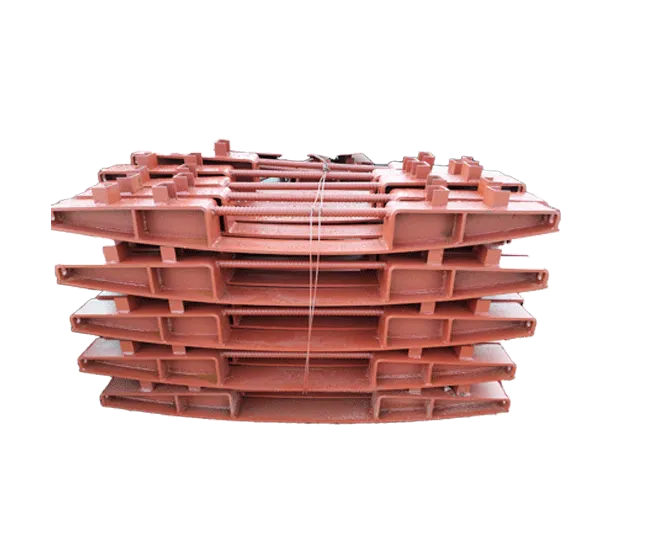Products Description
Rail Sleepers: The Load-Bearing and Stabilizing Cornerstone of Railway Tracks
In railway track systems, the laying and securing of steel rails depend on a robust supporting structure. Rail sleepers (commonly referred to as "sleepers"), as the core components linking steel rails to ballast, shoulder critical responsibilities: transmitting loads, maintaining gauge, and stabilizing the track's geometric configuration. Acting like the "skeleton" of the track, they evenly distribute the immense pressure generated by moving trains across the ballast, while providing a reliable foundation for securing the rails—making them essential to ensuring safe, smooth train operations.
I. Material Evolution: From Traditional to Modern Performance Enhancements
Rail sleeper materials have evolved continuously to meet advancing railway transportation needs. Common types include:
- Wooden sleepers: Crafted from hardwoods like pine and fir, they offer good elasticity and insulation, with the advantages of light weight and ease of processing and installation. However, their drawbacks—susceptibility to decay, short service life (typically 5–10 years), and the need for regular anti-corrosion treatments—limit their use today to minor branch lines or temporary tracks.
- Concrete sleepers: Made primarily from reinforced concrete, they are categorized by structure into monolithic and composite types. Boasting high strength, excellent stability, a 30–50 year service life, climate resistance, and low maintenance costs, they have become the standard choice for mainline and high-speed railways. Their drawbacks include substantial weight (around 250–300kg) and poor elasticity, requiring elastic pads to cushion vibrations.
- Steel sleepers: Rolled from high-quality carbon steel or low-alloy steel, they deliver exceptional strength, making them suitable for high-load, long-span sections such as bridges and tunnels. While offering superior compressive and shear resistance, their susceptibility to corrosion (requiring treatments like galvanizing or painting) and higher cost restrict their application scope.
- Composite sleepers: Fabricated from materials like fiberglass and resin, they combine the elasticity of wooden sleepers with the durability of concrete ones, featuring moderate weight and excellent insulation. As a promising development in sleeper technology, they are currently being trialed on heavy-haul railways and urban transit systems.
II. Structural Design: Precision Engineering for Load-Bearing and Adaptability
Sleeper structures are custom-designed based on rail type, ballast configuration, and operational conditions, with core components including:
- Sleeper body: The main structure, sized to match gauge requirements (China’s standard gauge is 1435mm, with sleepers typically 2.5–2.6m long). Its trapezoidal or rectangular cross-section narrows slightly in the middle to reduce weight and facilitate ballast placement.
- Under-rail section: The rail-contact area features grooves or shoulders to secure rails and limit lateral movement. Concrete sleepers often include rubber pads or nylon bushings in these grooves to enhance elasticity and reduce rigid friction between rails and sleepers.
- Connecting components: Fasteners (such as spring clips, buckles, and bolts) link rails to sleepers. These must provide sufficient clamping force to prevent rail loosening under train loads while allowing minor thermal expansion and contraction.
- Ballast interface: The sleeper base incorporates anti-slip ridges or textures to increase friction with ballast gravel, preventing longitudinal displacement during train vibration and ensuring overall track stability.
III. Core Functions: The Track System’s "Stability Hub"
Rail sleepers serve as the linchpin for maintaining track geometry and distributing loads, with key functions including:
- Load transmission: Vertical train loads—including vehicle weight, cargo, and impact forces—are evenly transferred through sleepers to the ballast, then dispersed into the subgrade, preventing excessive localized pressure and subgrade settlement.
- Gauge maintenance: End-mounted rail fixtures strictly control the distance between rails (gauge), ensuring stable wheel alignment and preventing derailments.
- Alignment and elevation control: Sleeper placement and height directly determine track direction (straight or curved) and gradient. Precise installation ensures track smoothness, minimizing vibration and noise during operation.
- Elastic cushioning: Through material properties or supplementary elastic pads, sleepers absorb operational vibrations and impacts, reducing fatigue damage to rails, ballast, and subgrade while extending component lifespans.
Whether in high-speed seamless tracks or heavy-haul freight lines, sleepers remain critical to system stability.
IV. Types and Application Scenarios
Sleepers are categorized by application to meet diverse operational needs:
- Standard sleepers: Ideal for mainline railways, offering moderate load capacity and gauge-matched lengths—their versatility makes them the most widely used type.
- Switch sleepers: Specialized for railway turnouts, with variable lengths (1.5m to over 4m) and configurations tailored to switch geometry, ensuring secure fixation of components like frogs and points.
- Bridge sleepers: Used on bridge tracks, often paired with bridge bearings. Their bases feature specialized connectors to anchor them to bridge structures, preventing displacement during bridge vibration while accommodating structural expansion.
- Tunnel sleepers: Designed for tunnel environments, these may use embedded or rail-bearing structures directly connected to tunnel floor foundations, adapting to confined spaces and moisture conditions.
- Heavy-haul sleepers: Engineered for freight lines carrying 10,000-ton trains, they use reinforced concrete or high-strength steel to enhance compressive and shear resistance for extreme loads.
V. Installation and Maintenance: Ensuring Long-Term Track Performance
Sleeper installation quality directly impacts track performance, requiring strict adherence to standards during construction and maintenance:
- Installation precision: Total station positioning ensures uniform spacing (typically 600–700mm), with directional deviations under 2mm and elevation errors within ±1mm. Curved sections require precise superelevation (outer rail height) to counteract centrifugal forces.
- Ballast integration: Ballast beneath sleepers must be layered and compacted with proper gradation to ensure even load distribution. Concrete sleepers require under-sleeper pads to reduce vibration transmission.
- Fastener maintenance: Regular torque checks ensure secure rail-sleeper connections, preventing gauge shifts. In temperature-variable regions, fastener tension is adjusted to accommodate thermal rail movement.
- Defect remediation: Cracked or spalled concrete sleepers, and rotted or split wooden ones, require prompt replacement. Issues like sleeper displacement or ballast compaction are addressed through lifting, realignment, and ballast cleaning operations to restore track parameters.
Summary
Though seemingly simple in design, rail sleepers are indispensable "stabilizers" in railway infrastructure. Evolving materials adapt to diverse environments, while precision engineering balances load capacity with elasticity, creating a critical force-transmission link between trains and subgrades. From steam-era lines to modern high-speed networks, sleeper technology has advanced in lockstep with railway innovation. Future integration of composites and smart monitoring will further enhance their role in ensuring safety and efficiency, solidifying their status as foundational elements of expanding rail networks.



